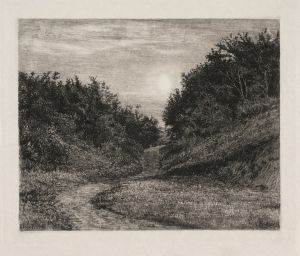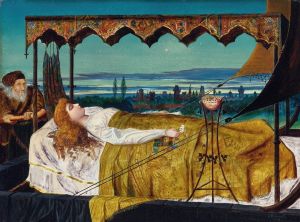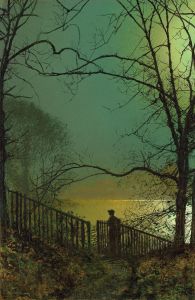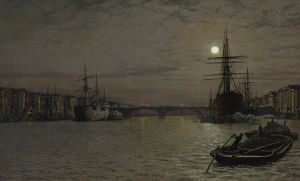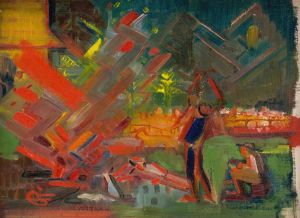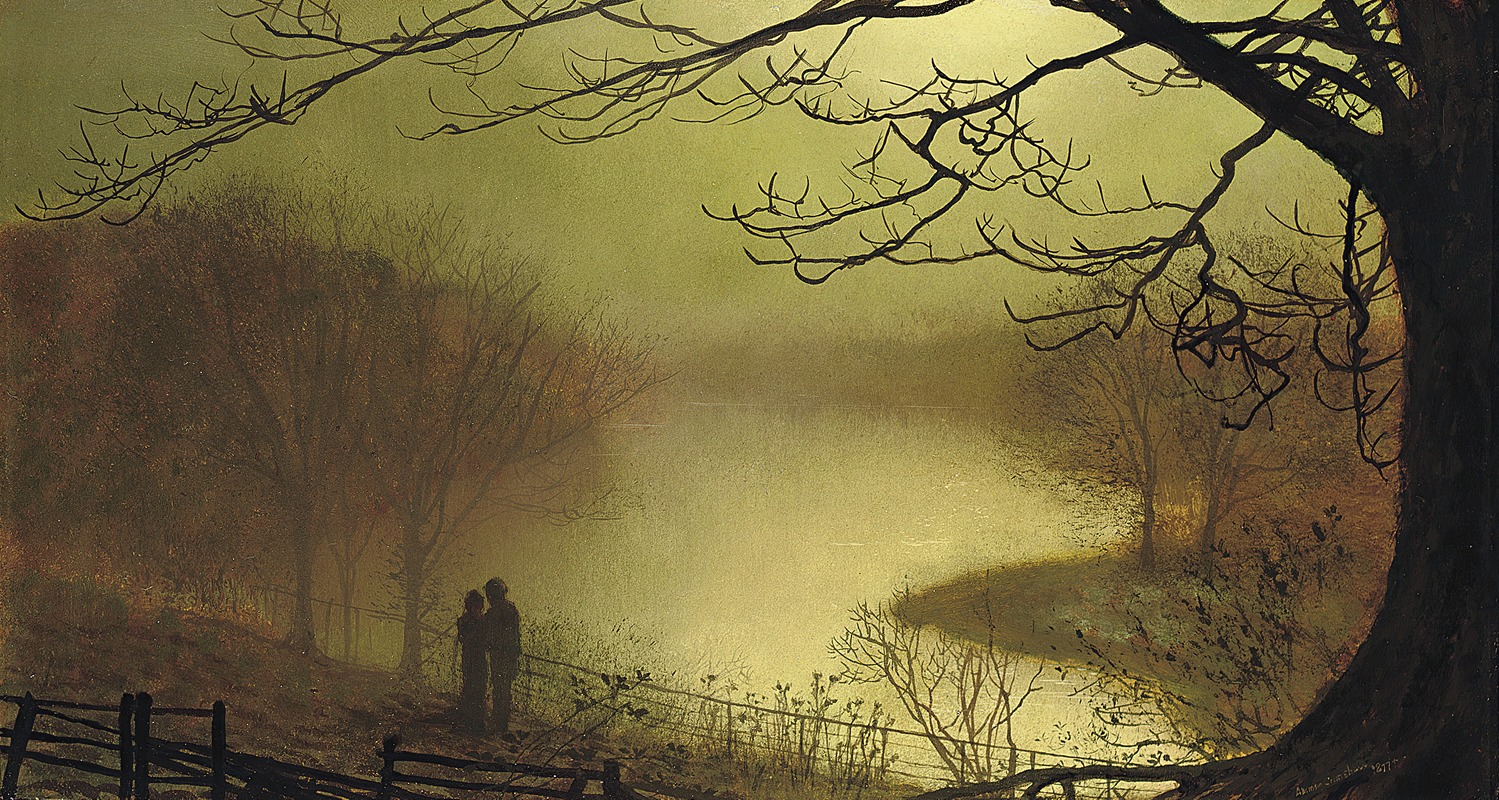
Roundhay Lake
A hand-painted replica of John Atkinson Grimshaw’s masterpiece Roundhay Lake, meticulously crafted by professional artists to capture the true essence of the original. Each piece is created with museum-quality canvas and rare mineral pigments, carefully painted by experienced artists with delicate brushstrokes and rich, layered colors to perfectly recreate the texture of the original artwork. Unlike machine-printed reproductions, this hand-painted version brings the painting to life, infused with the artist’s emotions and skill in every stroke. Whether for personal collection or home decoration, it instantly elevates the artistic atmosphere of any space.
John Atkinson Grimshaw was a renowned British painter known for his vivid and atmospheric landscapes, particularly those depicting urban scenes under moonlight. Born in Leeds in 1836, Grimshaw developed a distinctive style that captured the mood and essence of the Victorian era. His works are celebrated for their meticulous attention to detail and the ability to evoke a sense of nostalgia and mystery.
"Roundhay Lake" is one of Grimshaw's notable paintings, although specific details about this particular work are not as widely documented as some of his other pieces. Grimshaw often drew inspiration from his surroundings, and Roundhay Park, located in Leeds, was a frequent subject in his work. The park, one of the largest city parks in Europe, features a large lake that would have provided a picturesque setting for Grimshaw's artistic endeavors.
Grimshaw's technique involved the use of a dark palette, which he skillfully illuminated with touches of light to create a luminous effect. This approach is evident in many of his paintings, where he captures the interplay between light and shadow, often under the glow of moonlight or the soft illumination of gas lamps. His ability to depict the subtleties of light made his works stand out and earned him a reputation as a master of nocturnal scenes.
In "Roundhay Lake," Grimshaw would likely have employed these techniques to bring the tranquil waters and surrounding landscape to life. His paintings often convey a sense of stillness and reflection, inviting viewers to immerse themselves in the serene beauty of the natural world. While specific details about the composition and elements of "Roundhay Lake" are not extensively recorded, it can be inferred that the painting embodies Grimshaw's characteristic style and thematic focus.
Grimshaw's work was highly regarded during his lifetime, and he enjoyed considerable success as an artist. However, his reputation waned after his death in 1893, as the art world shifted towards new movements and styles. It wasn't until the mid-20th century that Grimshaw's paintings experienced a resurgence in popularity, with art historians and collectors recognizing the unique qualities and historical significance of his work.
Today, Grimshaw's paintings, including "Roundhay Lake," are appreciated for their technical skill and the evocative atmosphere they create. His ability to capture the essence of a scene, whether it be a bustling city street or a tranquil lakeside, continues to resonate with audiences. Grimshaw's legacy as a master of light and mood endures, and his works remain an important part of the Victorian art canon.
While specific information about "Roundhay Lake" may be limited, the painting is a testament to Grimshaw's artistic vision and his ability to transform everyday landscapes into captivating works of art. His contributions to the art world are celebrated, and his paintings continue to be studied and admired for their beauty and emotional depth.





